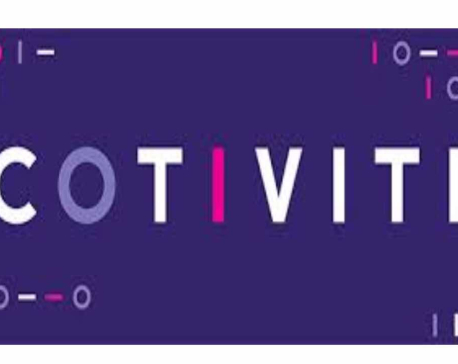
OR

More from Author
In spite of its recurrent occurrence, cases of conversion disorder do not get reported unless the mass gets affected
A young girl of 12 lives in a remote village of Sindhupalchok district with her father, mother, and two younger sisters. Her family lives on agriculture, which is barely enough to feed the family throughout the year. About a month ago, she started trembling at school. Her trembling episodes started at 10 am each day. They had a characteristic pattern: they would always occur during the first period of Math. She would tremble for more than ten minutes inside the class, grinds her teeth and become unconscious after ten minutes. She would not respond to her friends’ persistent loud calls and shaking. Baffled with this daily routine, her friends carried her to the principal’s office where she got to rest throughout the day.
While resting, she was unconscious but aware of her surroundings. She turned this way and that and closed her ears to block the noise which was easily heard through the thin walls of the school building. Her behaviors became more pronounced upon entering the room and were especially distinct to witness. As soon as the bell rings at 1.00 pm, she gets up on her own, manages her dress, combs her hair and goes out to have snap lunch with her friends.
Upon inquiry, it was revealed that her father had been consuming alcohol regularly and assaulting the family members in an intoxicated state. Once, he had even threatened to commit self-harm. She was facing psychosocial distress since that time. Also, she did not like math and had failed the last two tests, for which her teacher had exacted severe punishment. It was because of this additional stress that her trembling episodes started right before this period.
This is one among countless other cases of conversion disorder highly prevalent in our communities. In spite of its recurrent occurrence, most cases do not get reported unless a mass gets affected or the media comes to know of it.
As defined in the International Classification of Diseases of World Health Organization, conversion disorder is a dissociative disorder—marked by the presence of pseudo-neurologic symptoms. When individuals are unable to express their stress, it gets converted and expressed through physical symptoms, which is known as conversion disorder, previously referred to as hysteria.
Myth and reality
There is a myth that people affected by conversion disorder are consciously creating their distinct behaviors. This is not true. They primarily alleviate their psychiatric distress in the form of physical symptoms in a subconscious state. In simple words, it is not a problem of the body, rather of the mind.
Usually, people with an introverted personality or those who are unable to express their feelings get affected by this disorder. Studies have shown that it is usually more prevalent among women and adolescent girls, potentially because women in our society are not supposed to express their feelings openly as well as their habit of internalizing pain.
Our research has found that it is natural for a person to experience stress in their daily lives. ‘Everyone has a unique response mechanism to stress, but when the stress levels get too high and a person is unable to handle it, they may show various physical symptoms such as crying, shouting, fainting, trembling etc. The huge amount of stigma surrounding this illness only adds to the affected person’s stress levels. In our community, conversion disorder is perceived as the work of evil spirits, angered deities or sexual frustrations, which is a myth.”
Neuropsychiatrist Dr. Kamal Gautam explains conversion disorder as “a common mental health problem of our country.” Seen frequently across females in adolescence, he says, it may also be seen in males and across different age groups. “Conversion disorder can be treated with psychosocial counseling, stress management and by reducing secondary gain. Secondary gain is the excess care, attention and physical advantages offered by family members, relatives and friends to the affected individual. Trained health workers and counselors can also manage conversion disorders in the community.”
Conversion disorder should be understood as a mental health problem, which can be treated through psychosocial counseling. We should understand it as such.
The author is a Communication and Research Uptake Officer at Transcultural Psychosocial Organization Nepal
mchaulagain@tponepal.org.np
You May Like This

Nepal's Seismic Struggle and Ongoing Recovery Dynamics
Nepal's seismic vulnerability is highlighted by its history of frequent and devastating earthquakes. Over the past 52 years, from 1970... Read More...

Equality under the Law: Examining Legal Principles across Different Scales
The suspension of Nepali Congress (NC) MP Tek Prasad Gurung, who was found guilty on corruption charges, has confirmed that... Read More...

Cotiviti controversy mars Investment Summit in Nepal
Cotiviti Nepal is accused of leaking Rs 10.36 billion (about $84 million) in money, according to a complaint lodged by... Read More...




Just In
- Health ministry to conduct ‘search and vaccinate’ campaign on May 13
- Indian customs releases trucks carrying Nepali tea, halted across Kakarbhitta
- Silent period for by-election to begin from midnight
- SC issues short-term interim order to govt and TU not to take immediate action against TU legal advisor Khanal
- National consultation workshop advocates to scale up nutrition smart community in Nepal
- Patan High Court issues short-term interim order to halt selection process of NTB’s CEO
- NEPSE inches up 0.15 points; daily turnover increases to Rs 2.53 billion
- Bagmati Govt mandates tri-lingual signboards in offices















Leave A Comment